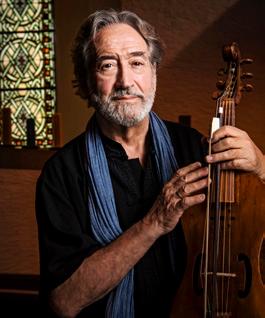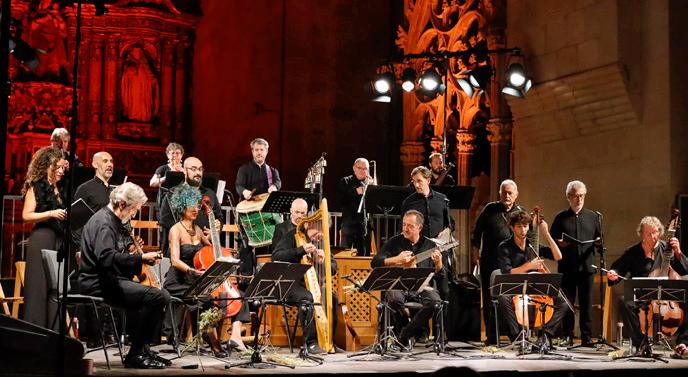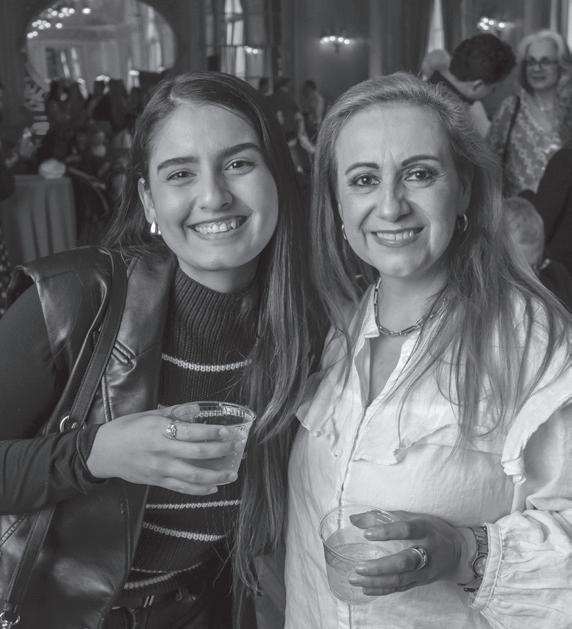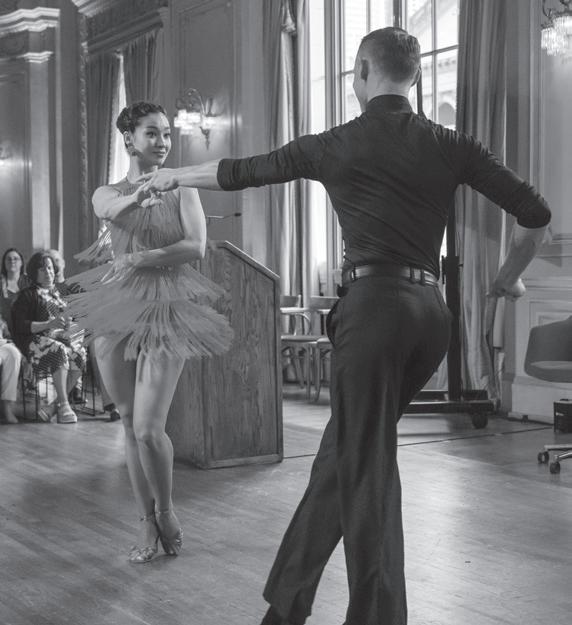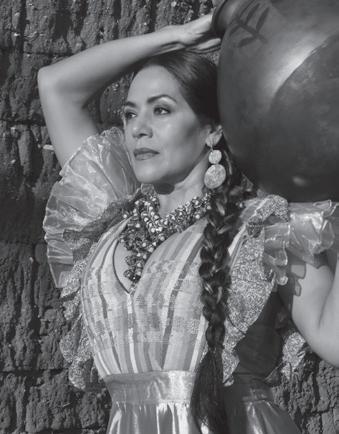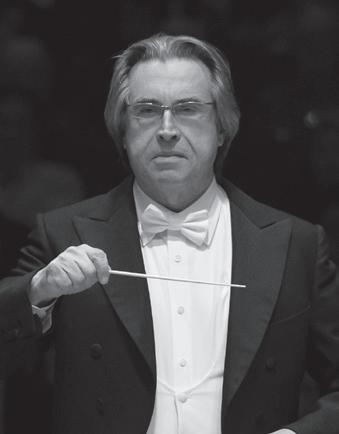COMMENTS
by Alba Nogueras
Ariadne awakens to find that Theseus has abandoned her on the island of Naxos, and in her despair, she cries out, “Lasciatemi morire, lasciatemi morire!” (Let me die, let me die!). The opening of Il Lamento d’Arianna is constructed from melodic tensions that draw the audience downward—like sinking in a tear—and upward—like ascending to the heavens, full of sorrow—reflecting an inner and solitary turmoil. This dramatic intensity, challenging to perform yet deeply palpable, captivated audiences from its premiere in Mantua in 1608, and its popularity swiftly spread throughout Europe.
This collection of four madrigals is the only surviving fragment of the opera Arianna, composed by Claudio Monteverdi with libretto by Ottavio Rinuccini, based on the mythological tale of the Cretan princess. Arianna is Monteverdi’s second opera, a work that not only marked a significant turning point in his career but also profoundly influenced the creative landscape of the late sixteenth century. Ariadne became a symbol of the betrayed heroine and the archetype of the wounded lover: despite rescuing Theseus from the Minotaur’s labyrinth, he left her to her fate.

concert features works from the sixth and seventh). His legacy profoundly impacted Europe, particularly in the north; he placed music at the service of the text, captivating listeners with a poignant, poetic force, and was particularly innovative in expressing human suffering and pain. Monteverdi aimed not to create beautiful melodies or pleasing harmonies, but instead to convey a message, to communicate through emotional expression, and to leave no one unmoved.
In this program, Jordi Savall demonstrates Monteverdi’s influence on composers from England and Germany. We will hear works by Samuel Scheidt, one of the most fascinating Lutheran composers of the early seventeenth century, who embraced the expressive techniques of the Italian madrigal. Additionally, we will explore the music of Anthony Holborne and John Dowland, who often employed melancholy and lament in their efforts to forge a closer union between text and music, emphasizing the words through specific musical means. Thus, this concert presents the tears—the lament, the sorrow—and the fire—the anger, the helplessness—of the muses.
Though the musical form known as madrigal first appeared around 1510, Monteverdi refined and evolved it, ultimately publishing nine books (this
Alba Nogueras is a cultural journalist and music critic at Núvol, The Digital Culture in Barcelona, Spain. She writes content and press releases for different cultural entities.
Claudio Monteverdi, portrait in oil by Bernardo Strozzi (1581–1644), ca. 1630
CLAUDIO MONTEVERDI
Born May 15, 1567; Cremona, Italy
Died November 29, 1643; Venice, Italy
Madrigal: Lamento d’Arianna, ll sesto libro de madrigali a cinque voci, No. 1, SV 107
Lasciatemi morire
Lasciatemi morire!
E chi volete voi che mi conforte in così dura sorte, in così gran martire?
Lasciatemi morire!
O Teseo, O Teseo mio
O Teseo, O Teseo mio!
Si, che mio ti vo’ dir che mio pur sei
benchè t’involi, ahi crudo, a gli occhi miei.
Volgiti, Teseo mio, volgiti, Teseo, O Dio!
Volgiti indietro a rimirar colei
che lasciato ha per te la Patria e il regno
e in questa arene ancora, cibo di fere dispietate é crude, lascierà l’ossa ignude.
O Teseo, O Teseo mio, se tu sapessi, O Dio, se tu sapessi, ohimè, come s’affanna la povera Arianna, forse, forse pentito, rivolgeresti ancor la prora al lito.
Ma con l’aure serene tu te ne vai felice ed io quì piango:
Let me Die
Let me die!
And who would you have console me in such harsh fortune, such dreadful pain? Let me die!
O Theseus, O my Theseus
O Theseus, O my Theseus! Yes, I will call you mine, for mine are you still, even though, cruel man, you have fled my sight.
Turn back, my Theseus, turn back, Theseus, O God!
Turn back and gaze once more at the woman who for you has forsaken fatherland and kingdom, and who, on this strand, prey to fierce and merciless beasts, will leave her bare bones.
O Theseus, O my Theseus, if you but knew, O God, if you but knew, alas, how poor Ariadne is suffering, perhaps, perhaps repentant, you would turn your prow again to shore.
Yet happily do you sail away on the gentle breeze while here I weep:
A te prepara Atene liete pompe superbe, ed io rimango cibo di fere in solitarie arene.
Tu l’uno e l’altro tuo vecchio parente
stringerai lieto ed io più non vedrovi, O madre, O padre mio.
Dove, dove è la fede
Dove, dove è la fede che tanto mi giuravi?
Così i ne l’alta sede tu mi ripon de gl’avi?
Son queste le corone onde m’adorni il crine?
Questi gli scetri sono?
Queste le gemme e gl’ori?
Lasciarmi in abandono a fera che mi stracci e mi divori?
O Teseo, O Teseo mio, lascierai tu morire in van piangendo, in van gridando aita la misera Arianna ch’a te fidossi e ti die’ gloria e vita?
Ahi, che non pur risponde
Ahi, che non pur risponde!
Ahi, che più d’aspe sordo a’miei lamenti!
O nembi, O turbi, O venti sommergetelo voi dentro a quell’ onde!
Correte, orchi e balene, e de le membra immonde empiete le voragini profunde!
Che parlo, ahi, che vaneggio? Misera, ohimè! Che chieggio?
Athens is preparing splendid celebrations for you, and I lie here, prey to wild beasts on this solitary strand.
Your aged parents will both embrace you joyfully while I shall never see you again, O mother, O my father.
Where, where is the fidelity
Where, where is the fidelity you swore so fervently to me? Is it thus that you place me on the high throne of my ancestors? Are these the crowns with which you adorn my brow? Are these the scepters? These the gems and the gold? Have you thus abandoned me to beasts to tear me to shreds and devour me?
O Theseus, O my Theseus! Will you let the wretched Ariadne die, weeping and calling out for help in vain, she who trusted you and gave you life and glory?
Alas, he answers me not Alas, he answers me not! Alas, deafer than a serpent is he to my lament!
O clouds, O water, O winds, submerge him beneath the waves! Hurry, orcs and whales and fill up the deep chasms on his wretched limbs. What am I saying, ah! Am I mad? Wretched woman, alas! What am I asking?
(Please turn the page quietly.)
O Teseo, O Teseo mio, non son quell’io che ì feri detti sciolse,
parlò l’affanno mio, parlò il dolore, parlò la lingua sì, ma non già il core.
O Theseus, O my Theseus, ’twas not I, no not I, ’twas not I who uttered such cruel words: ’twas my suffering, my pain talking; ’twas my tongue, yes, but not my heart.
Text: Ottavio Rinuccini (15621–1621)
Madrigal: Sestina: Lagrime d’amante al sepolcro dell’amata, ll sesto libro de madrigali a cinque voci, No. 5, SV 111
Incenerite spoglie, avara tomba
Incenerite spoglie, avara tomba,
fatta del mio bel sol, terreno cielo. Ahi, lasso! I’ vegno ad inchinarvi in terra.
Con voi chius’è il mio cor’ a marmi in seno, e notte e giorno vive in piant’in foco, in duolo, in ira, il tormentato Glauco.
Ditelo, O fiumi, e voi
ch’udiste Glauco
Ditelo, O fiumi, e voi ch’udiste Glauco, l’aria ferir dì grida in su la tomba,
erme campagne, e’l san le Ninfe e’l cielo:
A me fu cibo il duol, bevanda il pianto,
letto, O sasso felice, il tuo bel seno, poi ch’il mio ben coprì gelida terra.
Remains turned to ashes at the miserly tomb
Remains turned to ashes at the miserly tomb, made earthly paradise by my fair sun. Alas and alack, I come to lay you in earth.
With you is my heart buried deep in a marble vault, and night and day, the tormented Glaucus lives in flames, in tears, and anger.
Say it, O rivers, and you, lonely fields
Say it, O rivers, and you, lonely fields, who hear Glaucus rend the air with cries over her tomb that the nymphs and heaven may know: grief has become my food, tears my drink, your fair breast, O happy rock, my bed, since my beloved was laid in frozen earth.
Darà la notte il sol lume alla terra
Darà la notte il sol lume alla terra,
splenderà Cintia il di, prima che Glauco di baciar, d’honorar lasci quel seno che nido fu d’amor, che dura tomba preme.
Né sol d’alti sospir, di pianto, prodighe a lui saran le fere e’l Cielo.
Ma te raccoglie, O ninfa, in grembo’l cielo
Ma te raccoglie, O ninfa, in grembo’l cielo.
Io per te miro vedova la terra deserti i boschi e correr fiumi il pianto;
e driade e napee del mesto Glauco ridicono i lamenti, e su la tomba
cantano i pregi de l’amato seno.
O chiome d’or, neve gentil del seno
O chiome d’or, neve gentil del seno O gigli de la man, ch’invido il cielo ne rapì, quando chiuse in cieca tomba, chi vi nasconde? Ohimè! Povera terra— II fior d’ogni bellezza, il sol di Glauco. Nasconde? Ah, muse, qui sgorgate il pianto!
Dunque, amate reliquie, un mar di pianto
Dunque, amate reliquie, un mar di pianto non daran questi lumi al nobil seno
By the night, the sun will light up the earth
By the night, the sun will light up the earth,
the moon will shine by day, ere Glaucus cease kissing and honoring that breast wherein love nested, and which now lies
crushed in a sad grave. The beasts and heaven will greatly pity his sighs and tears.
Yet heaven gathers you, O nymph, to its breast.
Yet heaven gathers you, O nymph, to its breast.
Without you is the earth widowed, the woods are deserted, and tears flow in rivers; and dryads and wood nymphs echo the grieving Glaucus’s lament, and over your tomb sing the praises of his beloved’s heart.
O golden hair, O delicate snowy breast
O golden hair, O delicate snowy breast, O lily-white hand that envious heaven has stolen, though locked in this blind tomb, who can hide thee? Ah me! Poor earth— will thou hide the flower of beauty, the sun of Glaucus? Ah, muses, shed your tears.
Therefore, beloved remains, will these eyes
Therefore, beloved remains, will these eyes not shed a sea of tears over the noble breast
d’un freddo sasso? Ecco!
L’afflitto Glauco fa rissonar “Corinna”; il mar e’l cielo,
dicano i venti ogn’hor, dica la terra.
“Ahi, Corinna! Ahi, Morte! Ahi, Tomba!”
Cedano al pianto i detti! Amato seno a te dia pace il ciel, pace a te, Glauco. Prega, honorata tomba e sacra terra.
of this cold stone? Hark, wretched Glaucus makes ocean and heaven resound with his cry, “Corinna”; may the earth and all the winds utter forth:
“Ah, Corinna! Ah, Death! Ah, Grave!”
Let words yield to tears, beloved breast; may heaven give you peace; peace to you, Glaucus, you who pray at this honored grave, this sacred ground.
Text: Scipione Agnelli (1586–1653)
Madrigal concertato: Qui rise, O Tirsi, ll sesto libro de madrigali a cinque voci, No. 7, SV 113
Qui rise, O Tirsi, e qui ver me rivolse le due stelle d’amor la bella Clori;
Qui per ornarmi il crin, de’ più bei Fiori al suon dele mie canne un grembo colse.
O memoria felice, O lieto giorno!
Qui l’angelica voce e le parole, ch’umiliaro i più superbi Tori;
Qui le gratie scherzar vidi, e gli amori quando le chiome d’or sparte raccolse. O memoria felice, O lieto giorno.
Here laughed, O Thyrsis, and here gazed on me fair Chloris with her two loving stars.
Here to crown my brow, she gathered the prettiest flowers in her lap as I piped.
O happy memory, O joyous day!
Here, her angelic voice and the words with which she tamed the proudest bulls; here, I saw graces and cupids playing as she gathered up her golden tresses. O happy memory, O joyous day!
Qui con meco s’assise, e qui mi cinse del caro braccio il fianco, e dolce intorno stringendomi la man, l’alma mi strinse. Qui d’un bacio ferimmi, e ’l viso adorno di bel vermiglio vergognando tinse.
O memoria felice, O lieto giorno!
Here, she sat with me, and here she put her dear arm around me and, gently clasping my hand, captured my soul. Here, she wounded me with a kiss and tinged my face with a soft crimson blush.
O happy memory, O joyous day!
Text: Giambattista Marino (1569–1625)
Ballo concertato con voci e istrumenti: Tirsi e Clori, a 5
Concerto: settimo libro de madrigali, No. 29, SV 145
Tirsi
Per monti per valli, bellissima Clori, già corono a’balli le Ninfe e i pastori; già, lieta e festosa, ha tutto ingombrato la schiera amorosa il seno del prato.
Clori
Dolcisimo Tirsi, già vanno ad unirsi, già tiene legata l’amante l’amata; già movon concorde il suono alle corde: noi soli negletti qui stiamo soletti.
Tirsi:
Through mountains and valleys, my beautiful Clori, the nymphs and the shepherds now hast to the dancing. Now, happy and festive the amorous lovers from all parts assembled are thronging the field.
Clori:
Now see, my sweet Tirsi, they join one another, they hold one another, each lover his lover. Now the strings are in harmony sounding together. Only we are forgotten who stay back alone.
(Please turn the page quietly.)
Tirsi
Su, Clori, mio core, andianne a quel loco, ch’invitano al gioco le grazie ed amori; già Tirsi distende la mano e ti prende, ché teco sol vuole menar le carole.
Clori
Sì Tirsi, mia vita, ch’a te solo unita vo’girne danzando, vo’girne cantando. Pastor, benché degno, non facia disegno di mover le piante con Clori sua amante.
Clori e Tirsi
Già, Clori gentile, noi siam ne la schiera: con dolce maniera seguiamo il lor stile. Balliamo, ed in tanto spieghiamo col canto, con dolci bei modi, del ballo le lodi.
Ballo
Balliamo, che il gregge, al suon de l’avena che i passi cor regge, al ballo ne mena, e ballano e saltano snelli e saltano capri e gli agnelli.
Tirsi:
Come, Clori, my dear one, and now, let us go where the graces, the cupids invite us to frolic. Now Tirsi extends you his hand, and he takes you, for you, and you only he leads to the dance.
Clori:
Yes, Tirsi, beloved, with you, with you only I wish to go dancing, I wish to go singing. May no other shepherd, no matter how worthy, design to go dancing with Clori, his love.
Clori and Tirsi:
And now, gentle Clori, we join with the lovers. In a sweet manner let us follow their style. Let us dance, and while dancing, let us render in song with sweet, graceful measures the praise of the dance.
Dance
Let us dance so the flocks to the sound of the oaken pipe that leads their steps, join in the dance, and nimbly dancing and skipping come the goats and the lambs.
Balliam, che nel cielo con lucido velo, al suon de le sfere, or lente or leggere con lumi e facelle su danzan le stelle.
Balliam, che d’intorno nel torbido giorno, al suono de’venti le nubi correnti, se ben fosche e adre, pur danzan leggiadre.
Balliamo, che l’onde il vento che spira le move e l’aggira, le spinge e confonde sì come lor fiede se movon il piede; e ballan, le linfe quai garule ninfe.
Balliam che i vezzosi bei fior rugiadosi, se l’aura li scuote con urti e con ruote, fan vaga sembianza anch’essi di danza.
Balliamo e giriamo, corriamo e saltiamo, qual cosa è più degna il ballo c’insegna!
Balliamo e giriamo corriamo e saltiamo qual cosa è più degna il ballo n’insegna!
Let us dance so around us on days that are gloomy, with winds that are whistling, now slowly, now nimbly, with lamps and torches, the stars, too, come dancing.
Let us dance so around us on days that are murky to the sound of the winds, the scudding clouds, though dull and gloomy are set lightly dancing.
Let us dance so the waves by the blowing wind driven, which moves them and turns them, whirls them, confounds them, after their fashion, move their feet; then dance the waters like chattering nymphs.
Let us dance so the flowers so graceful and dewy, when fluttered by breezes hustled and twisted make most delightful semblance of dance.
Let us dance, let us whirl, let us run, let us jump; the dance teaches us what is best!
Let us dance, let us whirl, let us run, let us jump; the dance teaches us what is best!
Text: Alessandro Striggio (ca. 1573–1630)
PROFILES
Jordi Savall Director and Treble viol
Jordi Savall is one of the most versatile musical personalities of his generation. For more than fifty years, he has rescued musical gems from the obscurity of neglect and oblivion and given them back for all to enjoy. A tireless researcher of early music, he interprets and performs the repertoire both as gambist and conductor. His activities as a concert performer, teacher, researcher, and creator of new musical and cultural projects have made him a leading figure in the reappraisal of historical music. Together with Montserrat Figueras, he founded the ensembles Hespèrion XXI in 1974, La Capella Reial de Catalunya in 1987, and Le Concert des Nations in 1989, with which he explores and creates a world of emotion and beauty shared with millions of early music enthusiasts around the world.
With his key participation in Alain Corneau’s film Tous les Matins du Monde, which was awarded the César Cinema Prize for Best Soundtrack, his intense concert activity (about 140 concerts per year), his record releases (six albums per year), and the creation in 1998, together with Montserrat Figueras, of his own record label, Alia Vox, Jordi Savall has shown that early music does not have to be elitist but rather that it appeals to an increasingly
wide and diverse audience of all age groups.
Jordi Savall has recorded and released over 230 discs covering the medieval, Renaissance, baroque, and classical music repertoire, with a special focus on the Hispanic and Mediterranean musical heritage. He has received many awards and distinctions, such as the MIDEM Classical Award, International Classical Music Award, and a Grammy Award. His concert programs have made music an instrument of mediation to achieve understanding and peace between different and sometimes warring peoples and cultures. Accordingly, guest artists appearing with his ensembles include Arab, Israeli, Turkish, Greek, Armenian, Afghan, Mexican, and North American musicians. In 2008 Jordi Savall was appointed European Union Ambassador for intercultural dialogue and, together with Montserrat Figueras, was named Artist for Peace under the UNESCO Goodwill Ambassadors program.
In 2020 and 2021, to mark Ludwig van Beethoven’s 250th anniversary, he conducted the composer’s complete symphonies with Le Concert des Nations and recorded them in two CDs titled Beethoven Révolution. Their impact on the worldwide record market has been defined as “a miracle,” and the second volume has been distinguished with the German Record Critics’ Award for Best Orchestral Record.
Jordi Savall’s prolific musical career has brought him the highest national and international distinctions, including honorary doctorates from the
PHOTO © GERI BORN
Universities of Evora (Portugal), Barcelona (Catalonia), Louvain (Belgium), and Basel (Switzerland); the Order of Knight of the French Legion of Honor; the Praetorius Music Prize awarded by the Ministry of Culture and Science of Lower Saxony; the Gold Medal of the Generalitat of Catalonia, the Helena Vaz da Silva Award; and the prestigious Léonie Sonning Prize, which is considered the Nobel Prize of the music world. This year, he has been elected an honorary member by the Royal Philharmonic Society, the Royal Swedish Academy of Music, and L’Accademia Nazionale di Santa Cecilia.
Alia Vox is the exclusive producer of recordings by Jordi Savall and his ensembles.
Since its formation in 1998, Alia Vox has become established as one of the foremost labels specializing in high-quality early music. It is the exclusive producer of new recordings by Jordi Savall and his groups.
alia-vox.com
La Capella Reial de Catalunya
In 1987 Montserrat Figueras and Jordi Savall founded La Capella Reial following the model of the famous medieval royal chapels for which the great masterpieces of religious and secular music were composed on the Iberian Peninsula. La Capella Reial became one of the first vocal groups devoted to performing Golden Age music on historical principles and consisting exclusively of Hispanic and Latin voices. In 1990, when the ensemble received the regular patronage of the Generalitat of Catalonia, it changed its name to La Capella Reial de Catalunya.
The newly formed ensemble specialized in recovering and performing historical principles of the polyphonic and vocal music of Spain and Europe from the Middle Ages and Golden Age up to the nineteenth century. La Capella Reial de Catalunya shares with Hespèrion XXI the same artistic outlook and goals, rooted in respect for the profoundly spiritual and artistic dimension of each work, combining quality and authenticity regarding the style of the period with a careful attention to the declamation and expressive projection of the poetic text.
The ensemble’s extensive repertoire ranges from medieval music from the various Mediterranean cultures to the great masters of the Renaissance and the baroque. Some of their most celebrated concert programs are the Missa de batalla by Joan Cererols, Vespro della Beata Vergine by Claudio Monteverdi, the Cantigas of Alfonso X (the Wise), El Llibre vermell de Montserrat, Sephardic songs, the music of The Elche Mystery Play, the ballads from Miguel de Cervantes’s Don Quijote, the Cancioneros del Siglo de Oro, and Mozart’s Requiem. Recently, the group performed and recorded J. S. Bach’s Saint Mark’s Passion, Handel’s Messiah, Vivaldi’s oratorio Juditha Triumphans, J.S. Bach’s Christmas Oratorio, and Joseph Haydn’s The Creation, which has won international critical acclaim. The group has distinguished itself in various baroque and classical opera repertoire, as well as in contemporary works by Arvo Pärt. The Capella Reial de Catalunya played on de Jacques Rivette’s soundtrack of the film Jeanne La Pucelle (1993) on the life of Joan of Arc.
In 1992 La Capella Reial de Catalunya made their opera debut, accompanying all performances of Le Concert des Nations. They have received various awards and distinctions in recognition of their over forty CDs, notably a Midem Classical Award and Grammy Award. Under the direction of Jordi Savall, La Capella Reial de Catalunya pursues an intense program of concerts and recordings worldwide, and since the ensemble’s creation, it has regularly
performed at major international early music festivals.
Hespèrion XXI
Ancient music’s most important value stems from its ability as a universal artistic language to transmit feelings, emotions, and ancestral ideas that, even today, can enthrall the contemporary listener. With a repertoire that encompasses the period between the tenth and eighteenth centuries, Hespèrion XXI searches continuously for new points of union between East and West with a clear desire for integration and recovery of international musical heritage, especially that of the Mediterranean basin and with links to the New World.
In 1974 Jordi Savall and Montserrat Figueras, together with Lorenzo Alpert and Hopkinson Smith, founded the ancient music ensemble Hespèrion XX in Basel as a way of recovering and disseminating the rich and fascinating musical repertoire prior to the nineteenth century on the basis of historical criteria and the use of original instruments. The name Hespèrion means “an inhabitant of Hesperia,” which
in ancient Greek referred to the two most westerly peninsulas in Europe: the Iberian and the Italian. It was also the name given to the planet Venus as it appeared in the west. At the turn of the twenty-first century, Hespèrion XX became known as Hespèrion XXI.
Today, Hespèrion XXI is central to understanding the music of the period between the Middle Ages and the baroque. Its efforts to recover works, scores, instruments, and unpublished documents have incalculable value in providing new information and understanding about the historical knowledge of the period and enabling audiences to freely enjoy the aesthetic and spiritual delicacy of the works of this period.
Right from the beginning, Hespèrion XXI set out on a clearly innovative and artistic course that would lead to the establishment of a school in the field of ancient music because it conceived, and continues to conceive, ancient music as an experimental musical tool; with this tool, the ensemble seeks maximum beauty and expressiveness in its performances. Any musician in the field of ancient music is committed to the original spirit of each work and has to learn to connect with it by studying
the composer, the instruments of the period, the work itself, and the circumstances surrounding it. But as a craftsman in the art of music, the performer is also obliged to make decisions about the piece played; a musician’s capacity to connect the past with the present and to connect culture with its dissemination depends on his skill, creativity, and capacity to transmit emotions.
Hespèrion XXI’s repertoire includes, among others, the music of the Sephardi Jews, Castilian romances, pieces from the Spanish Golden Age, and Europa de les Nacions. Some of its most celebrated concert programs are Les Cantigues de Santa Maria d’Alfons X El Savi, La Diàspora Sefardí, the music of Jerusalem, Istanbul, Armenia, and Folías criollas. Thanks to the outstanding work of numerous musicians and collaborators who have worked with the ensemble over all these years, Hespèrion XXI still plays a key role in the recovery and reappraisal of the musical heritage and one that has great resonance throughout the world. The group has published over sixty CDs and performs concerts for the whole world, appearing regularly at the great international festivals of ancient music.
SYMPHONY CENTER PRESENTS
Jeff Alexander Chicago Symphony Orchestra Association President
Cristina Rocca Vice President for Artistic Administration
The Richard and Mary L. Gray Chair
James M. Fahey Senior Director, Programming, Symphony Center Presents
Lena Breitkreuz Artist Manager, Symphony Center Presents
Michael Lavin Assistant Director, Operations, Symphony Center Presents & Rental Events
Joseph Sherman Production Manager, Symphony Center Presents & Rental Events
Celebrating Latino composers, conductors and artists
The CSO Latino Alliance is a liaison and partner organization that connects the CSO with Chicago’s diverse communities by creating awareness, sharing insights and building relationships for generations to come. The group encourages individuals and their families to discover and experience timeless music with other enthusiasts in concerts, receptions and educational events.
Be a part of the season with concerts across musical genres highlighting world-class performances and compositions from Esteban Batallán, Lila Downs, Jimmy López Bellido, Elaine Elias and more!


